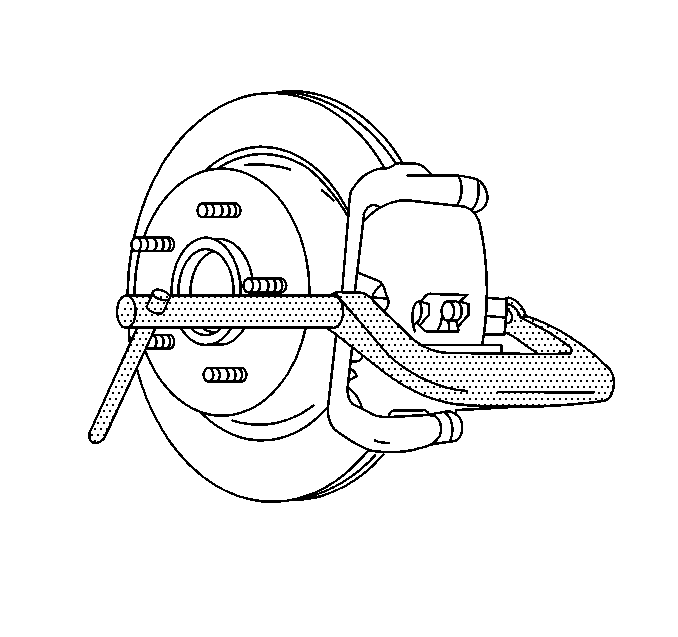- Use a siphon in order to remove half of the brake fluid from the master cylinder reservoir.
- Raise and support the vehicle. Refer to
Lifting and Jacking the Vehicle.
- Remove the tire and wheel assembly from the vehicle. Refer to
Tire and Wheel Removal and Installation.

- Install a large C-clamp over the brake caliper.
- Position 1 end of the clamp against the caliper body adjacent to the brake hose fitting.
- Position the other end of the clamp against the outer pad.
- Tighten the clamp in order to compress the caliper piston into the caliper bore.
- Remove the clamp.
- Attempt to move the caliper up and down. Verify the caliper is not loose.
- Attempt to move the caliper inward and outward. Verify the caliper slides smoothly with minimal force.

- Inspect the caliper bolts (6,7) for the following conditions:
- Gently pull the caliper slide pins (4,10) inward and outward without disengaging the slide pins from the boots (3,12).
- Inspect the boots for cracks or tears.
- Inspect the caliper slide pins for the following conditions:
| • | Foreign material between the guide pin hex and the caliper |
- If any of the conditions exist, replace the disc brake hardware. Refer to
Rear Brake Caliper Replacement .
- Inspect the bracket (1) for damage. Replace the bracket if damage is evident. Refer to
Rear Brake Caliper Bracket Replacement .
- Fill the master cylinder fluid reservoir. Refer to
Master Cylinder Reservoir Filling .
- Install the tire and wheel assembly. Refer to
Tire and Wheel Removal and Installation.
- Lower the vehicle.


